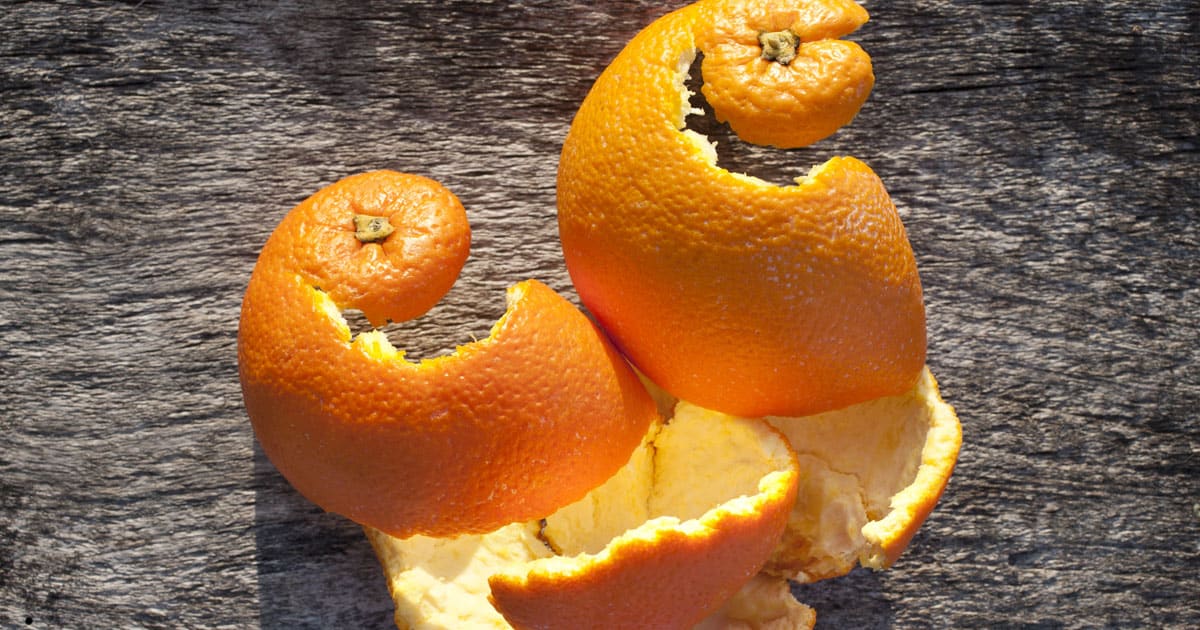
The problem of food waste is a well documented side-effect of our modern system of food production. While whole pieces of produce can be wasted, another part of the problem is the leftover waste when only part of a fruit or vegetable is used. This is certainly the case for oranges, where millions of pounds of wasted skins and pulp are thrown away every year as a result of orange juice production.
Throwing away the fruit solids in juice production is not only a potential environmental problem, but it also could be depriving the economy of useful products. Everything from scarves to biofuel to cookies can be made out of orange peels, meaning candied orange peel is far from the only use of the brightly colored skins of these important fruits.
The term upcycling has been growing in popularity over the last several years. In short, it refers to the process of discovering new ways to use or reuse parts of fruits or vegetables that would have otherwise been discarded.
This term is often used to refer to new uses for the rinds, skins, seeds, pulp, and other components of the fruit not consumed whole or used in juices, jams, or marmalades. These solids, which would normally be thrown away, can be processed and reused in culinary applications and beyond food production in a wide range of other contexts.
One of the most basic forms of upcycling is using orange zest or fresh orange peel in a cocktail or as a garnish on food. This may help reclaim a tiny bit of an orange, but there are far more thorough ways to make use of the left over peel.
Getting to a zero-waste goal in food production takes a little more imagination in what to do with the leftover solids from citrus fruits such as lemons, limes, and grapefruit. Thankfully, with continued social and economic pressure driving companies to waste less and use products more efficiently, orange peels and other citrus fruit solids are showing up in unexpected places.
Aside from novel uses for orange peels outside of the culinary realm, there is ample reason to find ways to include the leftover orange solids in foods and drinks as well. To begin with, much of the nutrients found in oranges lies in the skins and pulp. This includes important vitamins and minerals such as:
Long thought to be useless waste from a commercial perspective, citrus peels are now being investigated for possible uses in a variety of industries. Body scrubs, essential oils, and potpourri might all be fairly expected uses for citrus fruits, but increasingly inventive uses for citrus solids are being developed all the time.
Incorporating citrus in cleaning products for your stove top or freshening up the smell coming from your garbage disposal with the leftover skin of a tangerine or some lemon peels are also well-known hacks around the home for making use of citrus waste. Beyond some homebrew solutions like this, it turns out there are far more ambitious uses.
With the ongoing trend of people looking for gluten free alternatives to their favorite baked goods, it will come as good news to some that researchers have produced a flour made of orange peels. Known as orange by-product flour, this traditional flour substitute is high in dietary fiber, and in initial trials the cookies produced were subjectively rated as being on par with cookies produced with regular flour.
Sustainability is more than a buzzword to help companies attract more environmentally conscious consumers. Startups and established industry players alike are realizing the economic potential found in parts of produce that had previously been thrown away. As economic conditions tighten, finding new sources of revenue and new products from existing supply chains will only become more valuable.
At FruitSmart, finding new ways to use fruit is something that has been a part of our story since day one. Whether it is processing strawberry seeds or working with products like elderberry, we have the experience and the know-how to help you develop new and exciting products that can make use of otherwise wasted biomass, helping to reduce waste and improve your profitability.
If you are looking to expand your product lines or simply find new ways to integrate healthy fruit solids into your existing products, contact FruitSmart today. We work closely with all of our partners to help create new, innovative solutions and provide consistency and quality to ensure those products will continue to satisfy and attract customers down the road. If you are ready to explore the possibilities available in orange and other fruit solids, contact us today.
